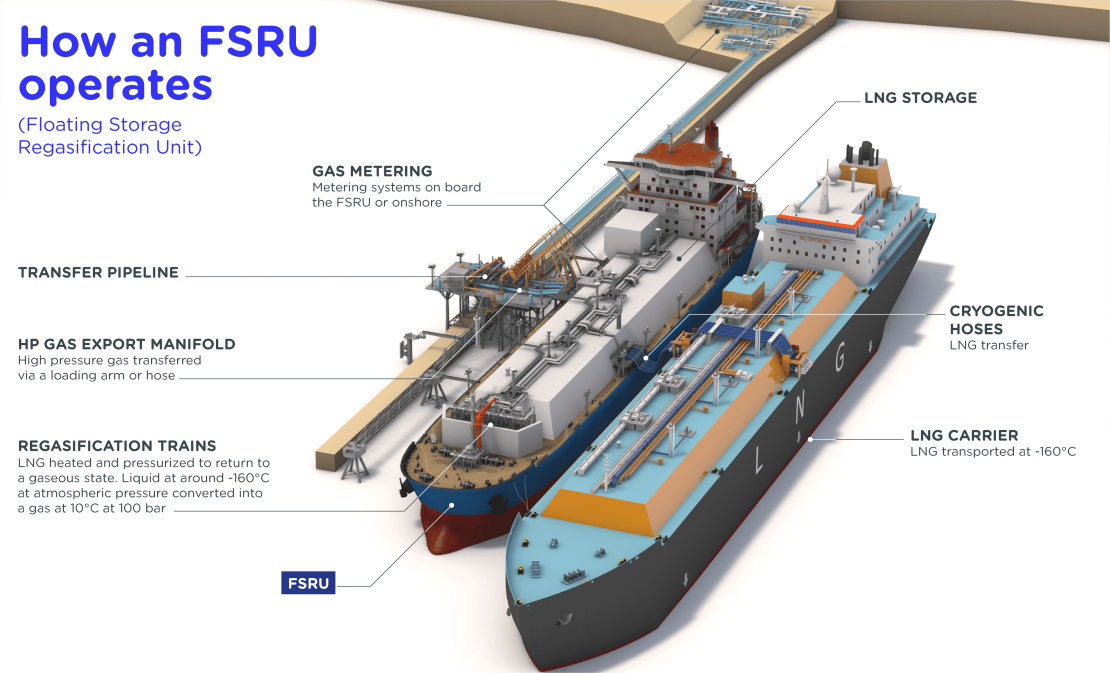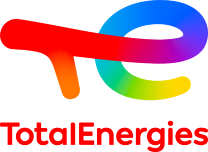How Does a FSRU Operate?
09/18/2023
Discover the operating principle of a FSRU (floating storage regasification unit) in an infographic.

TotalEnergies
How an FSRU operates (Floating Storage Regasification Unit)
A FSRU (Floating Storage Regasification Unit) is a device that consists of :
- a gas metering system, installed on board the FSRU or on land;
- a gas transfer pipeline;
- a HP gas export manifold which allows the transfer of gas at high pressure via an unloading arm or flexible hose;
- regasification trains, necessary for heating and pressurizing the LNG to bring it back to a gaseous state. Its temperature is raised from approximately -160°C at atmospheric gas pressure to +10°C at high pressure (100 bars).
Alongside the FSRU is a LNG carrier transporting the LNG at -160°C, which is transferred to the FSRU for storage of the LNG via cryogenic hoses.



